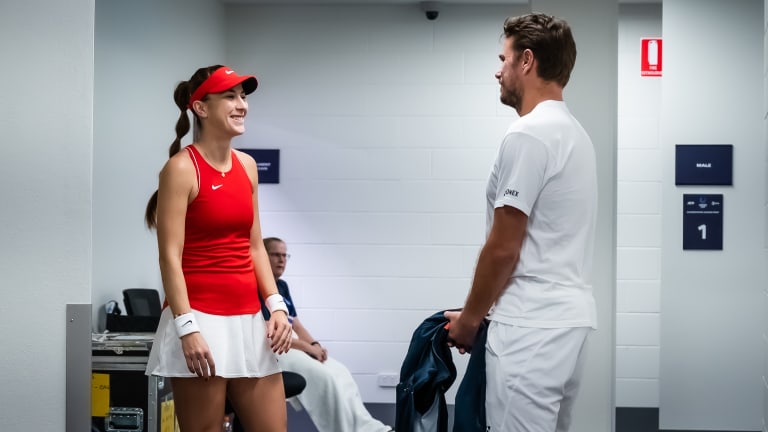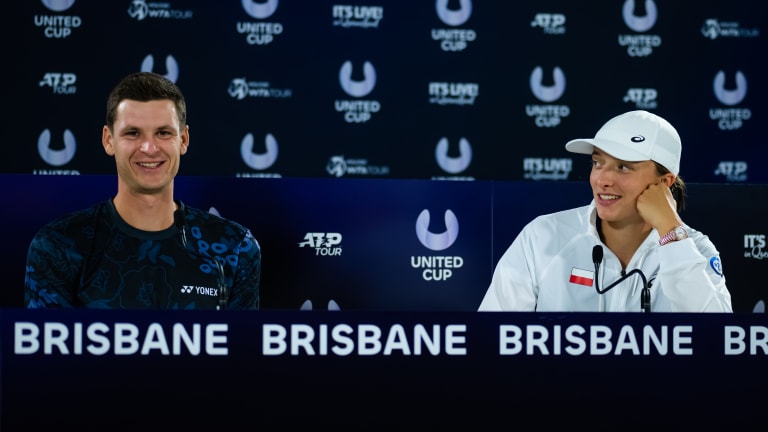United Cup
The United Cup shows that tennis is just fine as a sport of individuals whose appeal crosses borders
By Jan 02, 2023United Cup
Comeback kids! Germany rallies to win United Cup after Alexander Zverev staves off championship points
By Jan 07, 2024United Cup
Novak Djokovic, Iga Swiatek headline revamped 2024 United Cup team event
By Oct 20, 2023United Cup
'Like the Brady Bunch': Chemistry powers U.S. to United Cup triumph
By Jan 08, 2023United Cup
Taylor Fritz clinches United Cup final berth for U.S. squad after edging Hubert Hurkacz
By Jan 07, 2023United Cup
Frances Tiafoe's win over Daniel Evans sends United States into United Cup semifinals
By Jan 04, 2023United Cup
Matteo Berrettini defeats Casper Ruud as Italy wins Group E at United Cup
By Jan 03, 2023United Cup
Rafael Nadal drops to 0-2 at United Cup after falling to home favorite Alex de Minaur
By Jan 02, 2023United Cup
2023 was one day old when world No. 1 Iga Swiatek hit what could be the shot of the year
By Jan 01, 2023United Cup
United Cup recap: Rafael Nadal loses in three sets, Iga Swiatek dominant in season opener
By Dec 31, 2022The United Cup shows that tennis is just fine as a sport of individuals whose appeal crosses borders
This isn’t to say the new event is a mistake; it’s not. It’s an entertaining curtain raiser before the regular business of the season begins.
Published Jan 02, 2023
Advertising

Belinda Bencic and Stan Wawrinka know a thing or two about stepping up for Switzerland.
© 2023 Robert Prange
Advertising

Hubert Hurkacz and Iga Swiatek hope to guide Poland past the Swiss squad. Heading into Tuesday, the nations are tied 1-1.
© 2023 Robert Prange